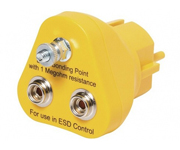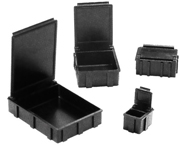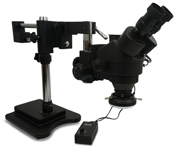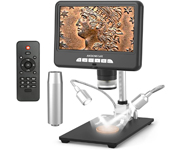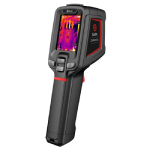Because it is sometimes difficult to find the right product for you in the long list of products, we try to provide you with as much advice as possible. This can be in the form of theoretical knowledge of properties, or a simple comparison between the pros and cons of products. The latter is the purpose of this article. This article is in fact a buying advice for people who are looking for an There are two basic properties to an oscilloscope. Bandbreedte en het aantal kanalen. This makes it easiest to distinguish between models and brands. However, there are many other features that are important when buying an oscilloscope. For example, whether it has enough sample rate to provide all channels with the maximum resolution or not. Because there are multiple target groups and price points for the models of all manufacturers, the purchase advice is split into three parts. This article is specifically about buying a 4 channel entry level oscilloscope. For an absolute entry level oscilloscope we also offer an article, and an article about the purchase of a midrange scope is coming soon.
Contents
Buying advice for an entry level 4 channel-oscilloscope
To meet the requirement that the chosen scope should be an entry level model, we have limited ourselves to a maximum purchase price of €600,- In this segment, many 2 channel oscilloscopes are available, but at the moment only a few 4 channel oscilloscopes.
Rigol DS1054ZThe most well-known entry-level 4 channel scope is from Rigol, and specifically the DS1054Z. This scope is widely praised for its high price/performance ratio. The scope can be improved through options after purchase. For example, the memory of the scope can be doubled later if necessary. This is just one example of the various upgrades that can be carried out when they are needed. The DS1054Z is by far our most sold scope at the moment. |
Siglent SDS1104X-E oscilloscopeOne of the best known 4 channel oscilloscopes of Siglent, a Rigol counterpart with similar price/quality, is the SDS1104X-E. On many specifications, these scopes match but one of the most obvious differences is the bandwidth, because the SDS1104X-E has a bandwidth of 100 MHz. Just like the Rigol, it is possible to add options to this oscilloscope afterwards. You can think of a function generator, logic analyser, wifi dongle etc. |
These two scopes are the ones available for less than €600. To be able to make a choice from these, it is important to put all the features side by side and weigh up which one fits the requirements better. It is not that they are very different from each other.
Specifications
The easiest comparison to make is that of hard specs. These are easy to find and relatively easy to analyse.
| Specifications | Rigol DS1054Z | Siglent SDS1104X-E |
| Bandwidt | 50 MHz | 100 MHz |
| Channels | 4 | 4 |
| Sampling frequency | 1GS/s | 1GS/s |
| Memory depth | 12 Mpts (24 with option) | 14 Mpts |
| Waveforms capture speed (max) | 30.000 wfm/s | 100.000 wfm/s |
| Vertical resolution | 8 bit | 8 bit |
| FFT | + | +++ |
| Display | 800x480 color display | 800x480 color display |
| Intensity grading | Yes | Yes |
| Bode plot | No | Yes |
| Pass / Fail output | Yes | Yes |
| Trigger output | Yes | Yes |
| Interfaces | USB, LAN, Trigger | USB, LAN, Trigger, Webinterface, Keyboard / Mouse |
| Dimensions | 313 x 161 x 122 mm | 312 x 134 x 150 mm |
| Weight | 2.7 kg | 2.5 kg |
As you can see from these specs, the scopes are not far apart, the Siglent has a larger memory for the signals and a higher waveform capture rate. In addition, the Siglent has a better FFT function and more interface connectivity.
Waveform capture speed
An important property of scopes is the waveform capture rate, or wfm/s. This specification says something about the ability of the scope to pick up fast characteristics of a signal. This also depends on the sample rate, but there is a big difference between what these specifications exactly say.
All scopes have a so-called 'dead-time' between each measurement. In this time, the scope processes the acquired signal and does any calculations. This time the scope is not paying attention to what is happening at the input. If something happens to the signal during this time, the scope will not notice it and will therefore not show it on the screen. A higher wfm/s means that there is a smaller chance that signal characteristics are missed because the 'dead-time' is smaller.
The specified speed is a maximum value that is not always achieved. The main factor influencing this speed is the number of memory points used. With a higher 'number of points', the speed decreases. Tests have shown that this speed decreases more with the Rigol, which leads to the fact that with the same test conditions and settings the Rigol records significantly fewer waveforms per second.
"Soft specs"
There are, however, a number of other properties to a scope, which are less easily measurable, or less clearly defined in a table, but which clearly influence the functioning of the scope in daily practice.
Math and FFT
An example is the ability to perform Math functions on a signal. For example, with the Rigol it is easy to multiply, add or divide signals. These are very standard functions that almost every scope can perform. In total the Rigol has 17 of these types of calculations that can be done live. The Siglent however has 38 different calculations. This makes it possible to perform very extensive calculations on the signal.
Another frequently used tool in signal analysis is performing a Fast Fourier Transform. With this, the scope can display which frequencies are present in the signal and how strongly these components are represented. The FFT is a useful tool when analysing FM signals, for example, as they always have at least two frequency components that are not easy to find in the time domain. In the field of FFT, the Siglent scores a lot better than the Rigol. The Siglent has a 1MPts FFT function which brings a high frequency resolution and fast refresh rate. Moreover, the FFT function of the Siglent has a large number of window functions which allows it to adapt to different requirements for spectrum measurements.
This picture clearly shows what it looks like when an FFT reacts quickly to a changing signal. This picture is in real time, not accelerated. |  |
The Rigol has an FFT with which basic properties of a signal can be displayed, however, the detail and speed of the calculation leaves much to be desired. This is because the number of points over which the FFT is calculated is limited and the update speed is relatively low.
EEV Blog made an extensive FFT function comparison video in early 2016 in which, among others, the 1000B series from GW Instek and the 1000Z series from Rigol are tested. In this video Dave explains the pros and cons of some scopes in terms of FFT.
Screen layout
The screens of the Rigol and Siglent are the same size, but the layout of the screens differs between the two. This is especially noticeable in the fact that the Siglent displays 14 divisions horizontally and the Rigol 12. The horizontal pixel density of both oscilloscopes is equal, so the Rigol has more space per division to display the signal in detail. In practice, this difference will not be noticeable. Both oscilloscopes have nice features like the intensity graded display of which an example can be seen below.
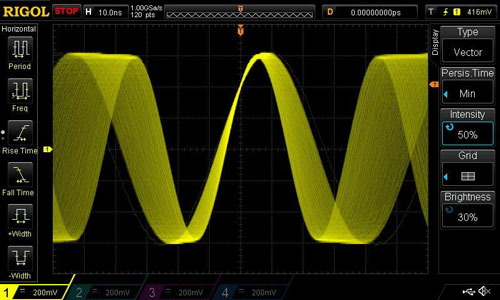
Conclusion
This brief overview provides a glimpse into the differences between the two scopes, but it is difficult to give an unequivocal answer to the question of which is best. The Rigol is currently priced 150 euros cheaper than the Siglent, but it offers inferior performance on both hard and soft specs. There are many points of difference between the two that are not or hardly reflected in specifications. In general, it can be concluded that the Siglent is just a bit better than the Rigol in many areas, but the price difference is also something to keep in mind.
The price difference is mainly in the differences mentioned above. So it is different for each person whether this difference is justified or not. If a larger bandwidth, better FFT, high WFM/s or larger signal memory is important, the Siglent is a better choice. The Rigol has the upper hand when the price is decisive, when signals only need to be visualized in time domain and when the memory size is not so important.










